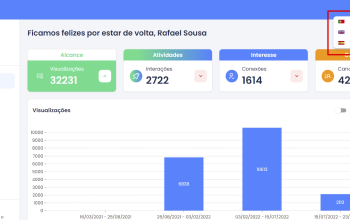Is SDL Trados Still Relevant in Today’s Localization Landscape?


In the field of translation and localization, there is one tool that has been dominant for decades: SDL Trados. This software has been a staple for translators and language service providers (LSPs) alike, offering a suite of features that streamline translation workflows and improve overall productivity. However, as the translation industry evolves and new technologies emerge, some are questioning whether SDL Trados is still relevant in today's localization landscape. In this article, we'll explore this question and take a closer look at SDL Trados, its advantages and disadvantages, and why some are turning to more modern translation management systems.
What is SDL Trados?
SDL Trados is a translation memory software developed by SDL, a company that specializes in language technology and services. The software is widely used by translators and LSPs to manage translation workflows and improve translation quality. SDL Trados offers a range of features, including translation memory, terminology management, and automated workflows, all designed to improve efficiency and productivity in the translation process.
Advantages of SDL Trados
Translation memory
One of the key advantages of SDL Trados is its translation memory (TM) functionality. Translation memory is a database that stores previously translated content, allowing translators to reuse translations for repeated phrases and sentences. This can greatly reduce translation time and costs while improving consistency across translations.
Terminology management
Another advantage of SDL Trados is its terminology management feature. This allows users to create and manage glossaries of key terms specific to their industry or project, ensuring consistency and accuracy across translations.
Automated workflows
SDL Trados also offers automated workflows, which can save significant time and effort in the translation process. For example, the software can automatically detect file formats, segment content, and suggest translations based on the translation memory and terminology database. This can speed up the translation process and reduce the risk of errors.
Disadvantages of SDL Trados
Expensive licensing fees
One of the main disadvantages of SDL Trados is its licensing fees. The software can be very expensive, especially for freelancers or small businesses. The licensing structure can also be complex, making it difficult for users to choose the right package for their needs.
Complex interface
SDL Trados can also be complex to use, especially for new users. The interface can be overwhelming, and it may take some time to learn how to use all of the features effectively.
Not cloud-based
Finally, SDL Trados is not cloud-based, meaning that users must install the software on their local machines. This can limit collaboration and accessibility, especially for teams working remotely.
Alternatives to SDL Trados
As the translation industry evolves, new technologies are emerging that offer alternatives to SDL Trados. One of the most popular alternatives is cloud-based translation management systems, which offer greater collaboration and accessibility. One such system is locize, which offers a range of features similar to SDL Trados but is entirely cloud-based.
Cloud-based solutions
Cloud-based translation management systems, such as locize, offer several advantages over traditional software like SDL Trados. For one, they can be accessed from anywhere, making them ideal for remote teams or teams working across different locations. They also offer greater collaboration features, such as real-time translation memory updates and more streamlined communication among team members. Another special advantage of locize is the way it can be directly integrated to your software or website, this way translators can modify translations without the need to ask the developers to adapt their code or to redeploy their software or website. In addition, cloud-based systems often have lower upfront costs and are more scalable, allowing companies to pay only for what they need as they grow.
Conclusion
While SDL Trados has been a dominant force in the translation industry for many years, it may no longer be the best fit for all companies. As the industry evolves, it is important to consider newer, cloud-based alternatives like locize that offer greater collaboration, accessibility, and scalability. Ultimately, the best translation management system will depend on the specific needs of your company, so it is important to carefully evaluate the options before making a decision.

